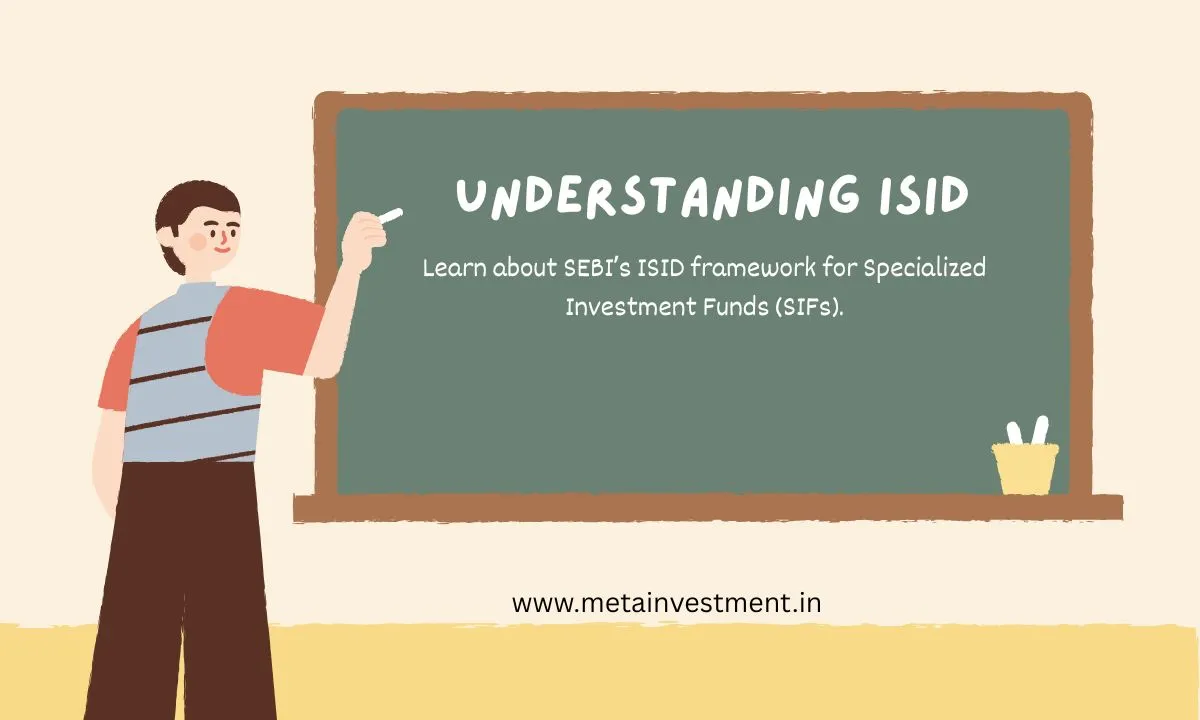The Securities and Exchange Board of India (SEBI) has introduced a comprehensive framework for Specialized Investment Funds (SIFs) to ensure transparency, uniformity, and investor protection. A critical component of this framework is the Investment Strategy Information Document (ISID), which provides detailed insights into the investment strategies of SIFs. This article explores the key aspects of ISID, its importance, and what investors need to know before investing in SIFs.

What is an Investment Strategy Information Document (ISID)?
The ISID is a mandatory disclosure document for Mutual Funds launching Specialized Investment Funds (SIFs). It serves as a comprehensive guide for investors, outlining the investment strategy, risks, objectives, and other critical details. The ISID is divided into two sections:
- Section I: Contains dynamic, investment strategy-specific information such as objectives, asset allocation, benchmark details, and performance metrics.
- Section II: Provides elaborated provisions, including definitions, risk factors, investment restrictions, and regulatory compliance details.
The ISID ensures that investors have access to clear, concise, and accurate information before making investment decisions.
Key Components of an ISID
1. Investment Strategy Highlights
- Name & Category: Aligned with SEBI’s regulatory framework for SIFs.
- Type: Open-ended, close-ended, or interval-based, with risk classification (e.g., equity, debt, hybrid).
- Investment Objective: Clearly states the fund’s goals, with a disclaimer that returns are not guaranteed.
- Liquidity & Listing Details: Information on redemption frequency and listing status (if applicable).
- Benchmark: A suitable index for performance comparison.
2. Asset Allocation & Investment Approach
- The ISID provides an indicative asset allocation table, specifying minimum and maximum exposure levels across instruments like equities, debt, derivatives, and overseas securities.
- It also outlines the fund’s investment approach, risk control measures, and portfolio turnover policy.
3. Risk Factors & Mitigation Strategies
- Specific risks associated with the investment strategy (e.g., market volatility, liquidity risk).
- Measures taken by the fund to mitigate these risks.
4. Fund Manager Details
- Name, qualifications, and experience of the fund manager.
- Track record of other funds managed by the same professional.
5. Performance Metrics (if applicable)
- Historical returns (1-year, 3-year, 5-year, and since inception).
- Comparison with benchmark performance.
6. Fees & Expenses
- New Fund Offer (NFO) Expenses: Charged to the AMC, not the fund.
- Annual Recurring Expenses: Includes management fees, custodian charges, and marketing costs.
- Exit Load: Charges applicable on early redemptions.
7. How to Invest
- Application process, cut-off timings, and minimum investment amounts.
- Options like Systematic Investment Plans (SIPs) and Systematic Withdrawal Plans (SWPs).
Why is the ISID Important for Investors?
- Transparency: Ensures investors have access to all critical details before investing.
- Risk Awareness: Highlights potential risks and how they are managed.
- Regulatory Compliance: Aligns with SEBI’s guidelines to protect investor interests.
- Performance Benchmarking: Helps investors compare the fund’s performance against a relevant index.
- Fee Structure: Provides clarity on expenses, ensuring no hidden charges.
SEBI’s Role in Regulating SIFs
SEBI mandates that all SIFs comply with the SEBI (Mutual Funds) Regulations, 1996, and subsequent circulars. Key regulations include:
- Eligibility Criteria: Mutual Funds must have a 3-year track record and an average AUM of at least ₹10,000 crores (or meet alternate route criteria).
- Disclosures: ISID must be updated in real-time and made available on the AMC’s website.
- Investor Protection: SEBI ensures that any changes in fundamental attributes (e.g., investment objective) require investor consent.
Conclusion
The Investment Strategy Information Document (ISID) is a vital tool for investors considering Specialized Investment Funds (SIFs). By providing detailed insights into the fund’s strategy, risks, and performance, the ISID empowers investors to make informed decisions. SEBI’s stringent regulations further ensure transparency and accountability, making SIFs a structured and regulated investment avenue.
Before investing, always review the ISID, consult a financial advisor, and assess whether the fund aligns with your risk appetite and financial goals. By understanding the ISID, investors can navigate the complexities of SIFs with confidence and clarity.
Stay informed, invest wisely!











